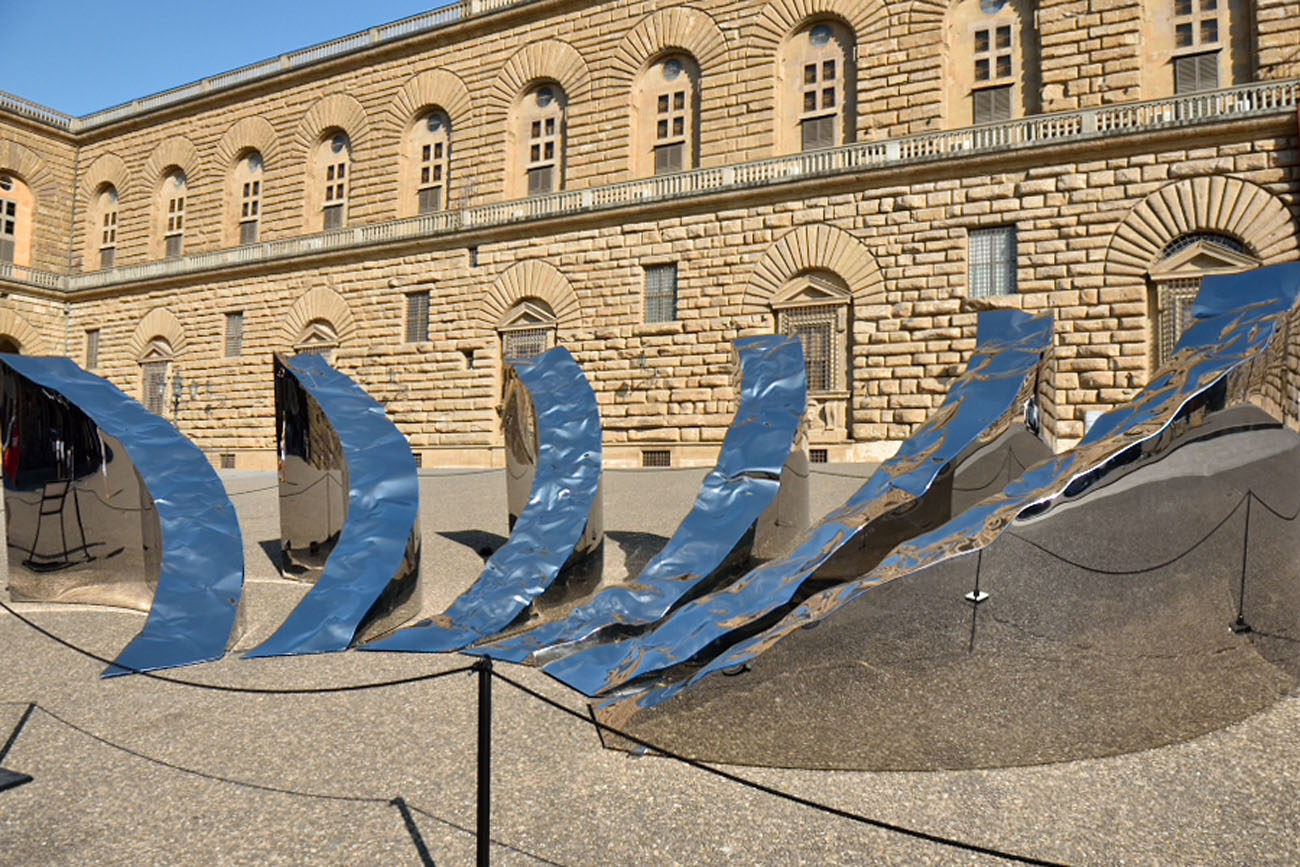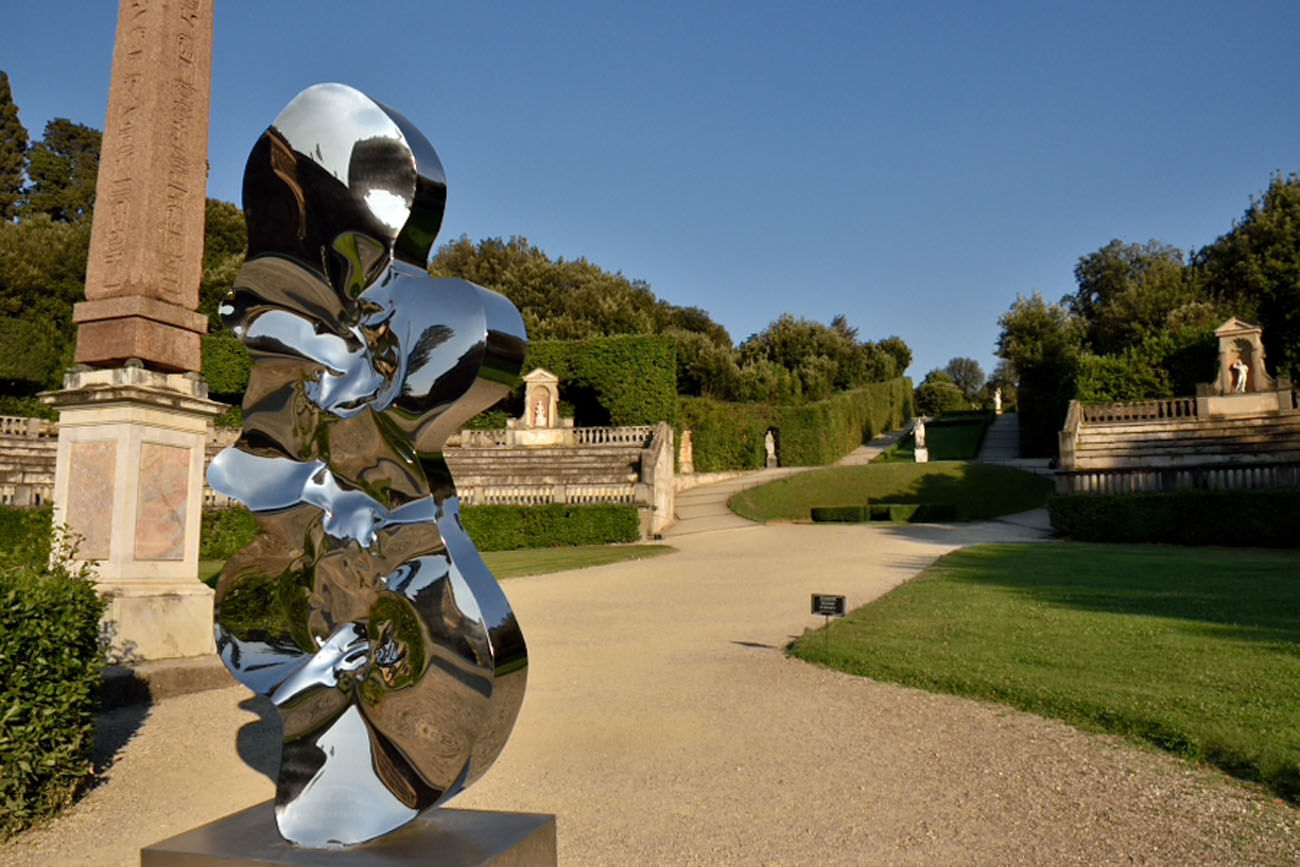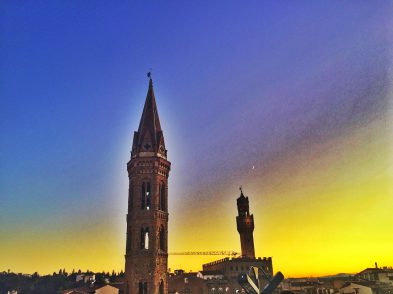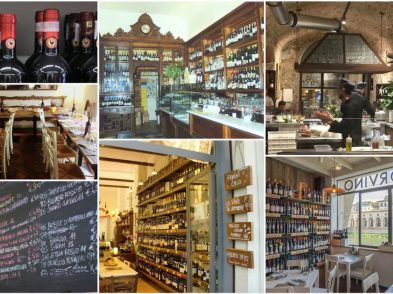The Tuscan countryside brims with thousands of trees. Florentines may know the difference between cypresses and redwoods, but what about cedars, firs, maples, birches, oaks and their varieties? Then the common Tuscan creatures: Corsican hares, red foxes, barnacle geese and kingfishers. As unknown fauna mounts, so does fear of the unfamiliar. If scientists haven’t discovered species, processes and environmental interplays, how can laypeople feel comfortable? To counter fear, we build walls, harvest resources and exile the environment. We kick out chaos and build walls around seemingly orderly cities. But Helidon Xhixha thinks we have it wrong.

Ph. Andrea Paoletti
The artist behind Boboli Gardens’ exhibit “In Random Order,” on until October 29, may not know the difference between the five Tuscan-area partridges, nor the leaf varieties of evergreens, but he knows that behind the veil of chaos, nature reveals order.
“The puzzle of deterministic chaos is just one example from twentieth-century science that shows how the limitations of human understanding make nature appear noisy, complicated and unpredictable,” Xhixha said. “Behind the veil of apparent randomness, many processes in nature are highly ordered, following simple rules.”
Through harmonizing 15 steel sculptures with the Boboli Gardens and central Florence, Xhixha intertwines society and nature, chaos and order. The Albanian artist unionizes two historically separate concepts and diminishes the fear of nature’s unknowns, encouraging people to laud the wild world. Before all this happened, I remember scratching my head while looking at “Order and Chaos.”
While erratic responses are the status quo in modern art, perspectives on Xhixha’s work blatantly oscillate. Art critics laud his pieces. My friends call them funhouse mirrors.
In 2015, Xhixha’s “Iceberg” roamed Venice’s canals, interesting the New York Times and the Guardian. One year later at the London Design Biennale, Xhixha entered “Bliss,” a multi-piece steel work inspired by Plato’s Ideal City. Xhixha left with the “Public Medal” for best installation.
The carnival comments have validity too, since in Civita Communications’ video for “In Random Order” more than half of the tourist shots show selfie preparations. Although I feared angering Xhixha with these comparisons, he surprised me by replying, “This is the best compliment ever!!!!!!” He seemed equally happy with awards as carnival comparisons.
To understand Xhixha’s intentions, viewers need background. Hence, Xhixha’s curators, director of Uffizi Galleries Eike Schmidt and art critic Diego Giolitti, placed “Knowledge” on Piazza Pitti as an opening act to the main show. Vast steel segments spiral outwards from a central point, reminiscent of the Nautilus shell. The Nautilus, a cousin of squids and octopi, lives in a shell approaching the Fibonacci sequence. Starting with 0 and 1, add the two previous numbers together to find the next: 0, 1, 1, 2, 3, 5, 8, 13, 21 to infinity. These numbers often appear in nature, with most flowers bearing 3, 5, 8, 13, 21 or 34 pedals, noted mathematician Arthur Benjamin. Pinecones, hurricanes and bunny reproduction reflect Fibonacci numerals. Even though the Nautilus shell only approaches the Fibonacci sequence, it symbolizes order in nature. Despite perceptions that nature represents chaos compared to an orderly society, Xhixha argues the opposite is true.
To connect order and chaos, Xhixha displayed “Infinite” at the Pitti Palace’s entrance as well. “Two sloping forms, fragmented and rising in opposite directions, sit side by side,” Xhixha described this work. “They are at once the same and also entirely different; they parallel not only each other, but also the exhibition itself: a place where opposites can be understood, not as disparate entities, but instead, as highly connected concepts.”
“Infinite,” like yin and yang, connects two ideas that people historically separate. Chaos cannot exist without order, and order without chaos. Centuries ago, Florentines built walls to keep conquerors out and establish stability within the city. Today, we use order to simplify our lives: a cellphone rather than a landline, a dishwasher over a sink, and Deliveroo instead of walking to Ic Che Thai. But as tourists pile in and via dei Calzaiuoli turns into a bazaar, maybe we walled chaos in instead of out.
To alter perceptions, Xhixha complements the environment, creating strange worlds out of classic Florentine scenes. At center stage, “Order and Chaos” sits behind Boboli Gardens’ entrance. It is a mounting steel rectangle with a smashed in center and rolling sides. Walk up to the back and you will find the garden’s warped greenery. From the front, your image contorts into a watery realm. While one side nearly reproduces reality, the other constructs a netherworld. Like perceptions of Xhixha’s work, the reflected images on “Order and Chaos” are hardly consistent.
“That’s the secret of these sculptures—they change with the weather and the environment around them, offering a different understanding with every look,” Xhixha said. “And while they are grand in scale, they don’t compete with the landscape; they enhance it, and make us look at it with fresh eyes.”
In an ever-changing world, it is impossible for order and chaos to avoid one another. So, Xhixha has merged gigantic steel works into a lush environment. While his pieces remain conspicuous, they also melt into princely gardens as if they were meant to be there the entire time. As if order and chaos were never meant to be separate at all.
Through harmonizing 15 steel sculptures with the Boboli Gardens and central Florence, Xhixha intertwines society and nature, chaos and order.
Helidon Xhixha: In Ordine Sparso
Boboli Gardens, Palazzo Pitti
Until October 29
Open 8:15am-6:30pm, closed the first and last Monday of the month








